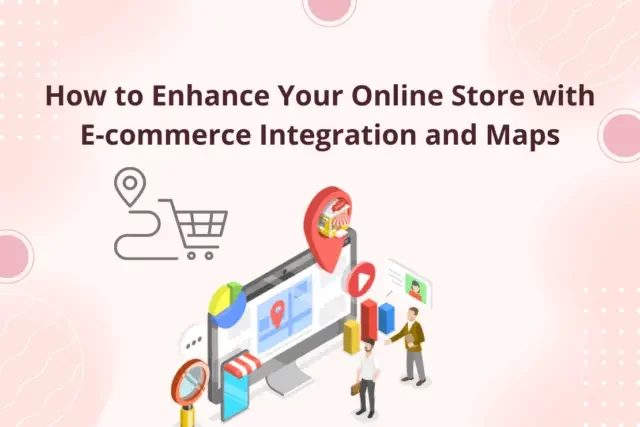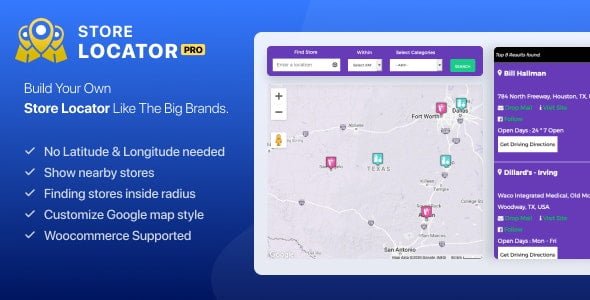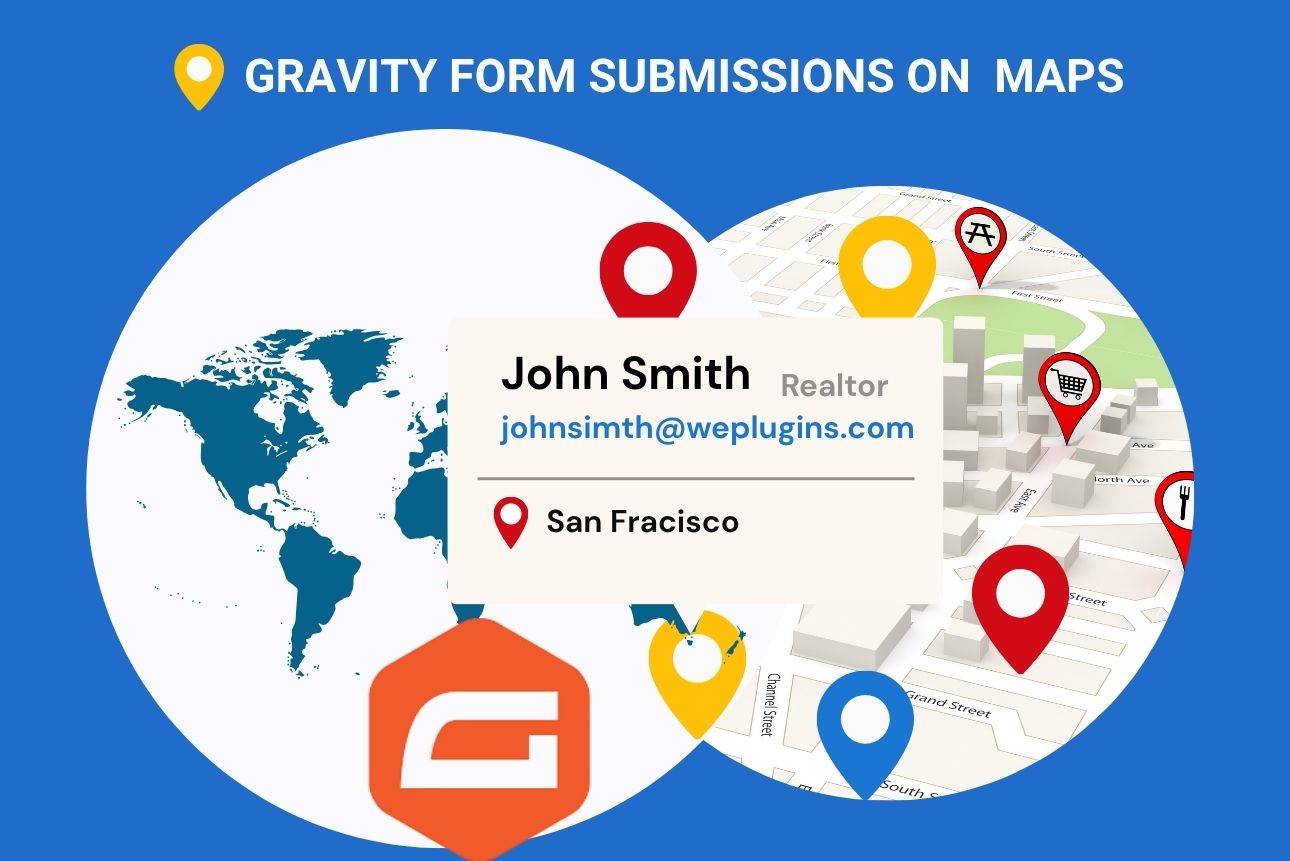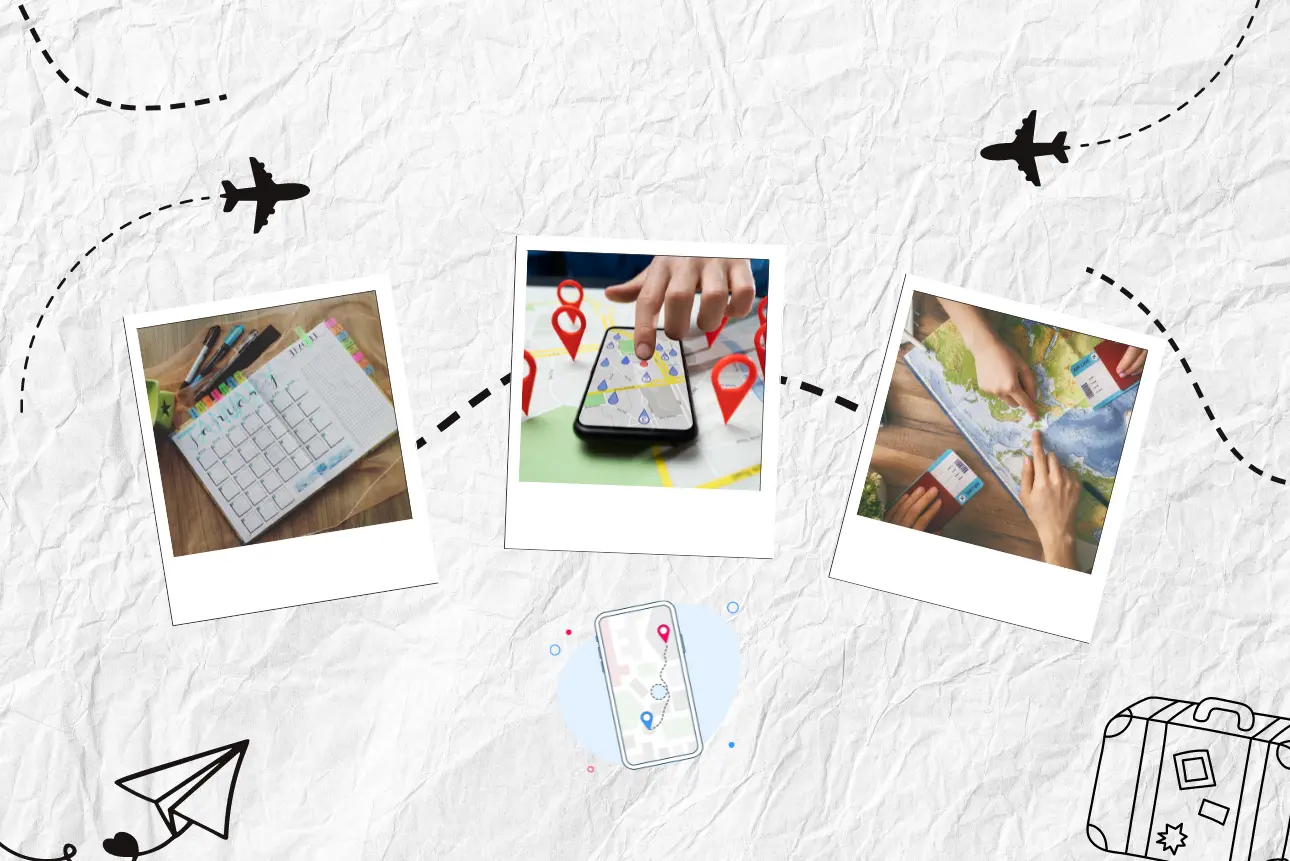This website uses cookies so that we can provide you with the best user experience possible. Cookie information is stored in your browser and performs functions such as recognising you when you return to our website and helping our team to understand which sections of the website you find most interesting and useful.

In today’s competitive e-commerce landscape, customer experience is king. Shoppers expect a seamless journey, from browsing products to understanding availability and securing a timely delivery. This is where e-commerce integration with maps comes in – a powerful tool that can transform your online store and boost sales. Imagine a world where customers can:
- See product availability in real-time based on their location.
- Locate physical stores for pickups or returns, complete with directions.
- Visualize delivery zones and estimated delivery times on a user-friendly map.
This is the magic of map integration for online stores. By incorporating maps into your website, you’ll be providing a wealth of valuable information to your customers, ultimately leading to a more informed and satisfying shopping experience.
Unveiling the Benefits of a Map-Powered E-commerce Store
The advantages of implementing a map integration solution are numerous. Let’s delve into a few key benefits:
- Enhanced Customer Experience: With a product availability map for ecommerce, customers can instantly see if their desired item is in stock at nearby stores. This transparency builds trust and reduces frustrations caused by out-of-stock purchases.
- Streamlined Order Fulfillment: A store locator with delivery zones for online stores empowers customers to choose their preferred delivery option, be it home delivery or in-store pickup. This clarity streamlines the order fulfillment process and reduces customer inquiries.
- Boosted Sales: Increase online sales with map-based delivery zone visualization. Customers can see exactly what areas you deliver to and the associated delivery times, allowing them to make informed purchasing decisions. This can be particularly impactful for businesses with regional product availability or unique delivery options.
- Improved Brand Perception: Ecommerce integration with maps demonstrates a commitment to transparency and customer convenience. This fosters trust and loyalty, ultimately improving your brand perception in the eyes of your customers.
Choosing the Right Tools for the Job: E-commerce Plugins and Beyond

WC Store Locator Pro
Now, you might be wondering, “How do I integrate maps into my online store?” Thankfully, there’s a solution for everyone! Let’s explore some popular options:
- Woocommerce Plugins: If you’re using WooCommerce for your online store, you’re in luck! There are several woocommerce plugins available that offer map integration functionalities. These plugins allow you to display product availability, store locations, and delivery zones directly on your product pages and checkout process.
- WordPress E-commerce Plugins: Even if you’re not using WooCommerce, there are still WordPress e-commerce plugins that can help you integrate maps. These plugins work similarly to WooCommerce plugins, offering a broader compatibility range for various e-commerce platforms built on WordPress.
- Custom Development: For complete control and customization, consider working with a developer to create a bespoke map integration solution. This option is ideal for businesses with unique needs or complex delivery models.
Best Practices for Seamless Map Integration
Once you’ve chosen your map integration solution, it’s crucial to implement it effectively. Here are some best practices to keep in mind:
- Clear and Concise Information: Ensure all map elements – product availability indicators, store markers, and delivery zone boundaries – are clear and easy to understand.
- Mobile-Friendly Design: In today’s mobile-first world, guarantee your map integration is optimized for all devices, including smartphones and tablets.
- Customization Options: Allow customers to zoom in and out on the map to explore details and personalize their experience.
Additionally, consider these tips:
- Link Your Store Locations: Integrate your physical store locations with the map to provide directions and contact information. This is particularly useful if you offer in-store pickup options.
- Offer Real-Time Delivery Estimates: If possible, integrate your delivery services with the map to provide customers with real-time or estimated delivery times based on their location.
- Integrate with Inventory Management: Ensure your map reflects up-to-date product availability by synchronizing it with your inventory management system.
- Provide Clear Call-to-Actions: Use clear CTAs (Calls to Action) on your map, encouraging customers to visit a store
Leveraging the Power of Maps: Examples and Inspiration
Now that we’ve explored the benefits and implementation strategies of map integration for e-commerce stores, let’s delve into some real-world examples to spark your creativity:
Scenario 1: The Regional Retailer
Imagine a sporting goods store with a limited physical presence but a robust online catalog. By implementing a product availability map for ecommerce, they can showcase which products are available at nearby stores, allowing customers to choose between home delivery or in-store pickup. This caters to customers who might need an item urgently or prefer the convenience of trying it on before purchase.
Scenario 2: The Multi-Location Franchise
A popular fast-food chain can leverage map integration for online stores to display all their locations. Customers can easily find the nearest branch, view store hours, and potentially even place pick-up orders directly through the map interface. This streamlines the process for customers on the go, boosting convenience and potentially increasing sales.
Scenario 3: The Subscription Service
A subscription box company offering regionally sourced products can utilize a store
locator with delivery zones for online stores. This allows them to clearly communicate their delivery coverage area and highlight any potential limitations. Additionally, they could showcase partner stores where customers can pick up their subscription boxes for added flexibility.
Remember: Don’t be afraid to experiment! Map integration can be adapted to various business models, fostering a more engaging and informative online shopping experience.
Addressing Potential Challenges and Overcoming Hurdles
Challenges and Hurdles
- Data Management: Maintaining accurate and up-to-date product availability, store location, and delivery zone information across different platforms requires diligence.
- Technical Expertise: Implementing a map integration solution might require some technical know-how, especially for custom development solutions. However, many plugins offer user-friendly interfaces and extensive documentation.
- Mobile Optimization: Ensuring a seamless map experience across all devices is crucial. Invest in a solution that is fully responsive and mobile-friendly.
How to overcome these hurdles
- Invest in Data Management: Develop clear processes to update product availability, store information, and delivery zones regularly. Consider integrating your map solution with your inventory management system for real-time updates.
- Seek Support: If you lack technical expertise, explore user-friendly plugins or consider outsourcing the implementation to a qualified developer.
- Prioritize Mobile Optimization: Test your map integration thoroughly on various mobile devices to ensure a smooth and intuitive user experience.
Conclusion
Incorporating maps into your e-commerce store is a strategic move that can significantly enhance your customer experience and boost sales. By leveraging e-commerce integration with maps, you provide valuable information, empower informed purchasing decisions, and ultimately, build stronger customer relationships.

WC Store Locator Pro
Explore the latest in WordPress
Trying to stay on top of it all? Get the best tools, resources and inspiration sent to your inbox every Wednesday.



